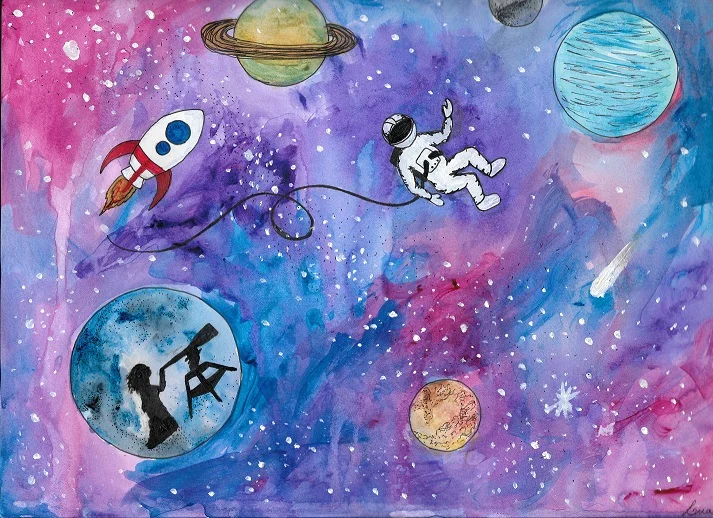
Why is it dark at night?
The answer sounds obvious — well of course it’s dark at night, the sun isn’t up! No, not quite. Think about it. I mean really think about it.
Here we stand on Earth looking up at a clear night sky littered with stars. There are 300 billion stars just in our Milky Way galaxy alone. Looking further, there are billions of galaxies in every single corner of the observable universe, with billions and billions of stars in each and every single one. In fact, it’s estimated there are over one hundred times as many stars in the observable universe than there are grains of sand on Earth.
If you really think about it, there are stars in every single direction — light coming from every single point in the sky — so why is it dark at night? What's going on?
Space is expanding.
It’s dark at night because the universe is expanding. If you don’t believe me — which is understandable, skepticism is healthy — just think about it.
First let’s explore how far we can theoretically see into the universe. The observable universe is vast: ninety three billion light years across vast. Which is pretty impressive for something only 13.8 billion years old. At this scale, all the light we see is coming from the past — you are essentially looking back in time when you look at the stars.
It’s not like light travels slowly. It's pretty fast — 300,000 kilometres per second fast. That’s like going around the Earth’s equator seven times in a single second.
Yet the fact remains that we can never see the furthest objects in our universe because that visible light never reaches us. Since space expands equally fast, the further two objects are, the more space there is to expand. At a certain point, the space between a light particle leaving a galaxy at 300,000 kilometres per second and the Earth is expanding faster than the speed of light.
It’s like the light packet is running along a treadmill but is never going fast enough to make it to the end.
But if you had some special tools, the night wouldn’t look so dark. You’d be able to see some of this missing light, and notice that some of it is stretched out to the infrared spectrum, or heat maps of the sky. This is called red-shift.
You’d be able to hear it as well. You know that white static noise you hear on an empty radio channel? A part of that, no matter where you are, will pick up some of the oldest light in the universe — light from the cosmic microwave background, a baby picture of the universe.
But there’s a boundary. A point where we can never ever see beyond. This is called the cosmic light horizon and it’s the end of our observable universe.
Jawad Sakarchi is a fourth-year biology major with a passion for evolution and astronomy. He was the past Co-President and is a current advisor of the UBC Astronomy Club.

